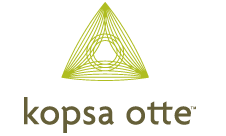Larry, Could you give me information on SIMPLE retirement plans for my employees.
Inus
Inus, here is the information on SIMPLE plans that you requested.
“SIMPLE” retirement plans: This is the acronym for “savings incentive match plan for employees.” This type of plan is targeted at businesses with 100 or fewer employees, and is designed to offer greater income deferral opportunities than individual retirement accounts (IRAs), with fewer restrictions and administrative requirements than traditional 401 pension or profit-sharing plans.
Under a SIMPLE plan, any employee with compensation of at least $5,000 must be permitted to enter a “qualified salary reduction arrangement.” Under this arrangement, an employee can elect to have a percentage of compensation not in excess of $11,500 (in 2009) set aside in an IRA, instead of receiving it in cash. This maximum is indexed for inflation each year.
Amounts taken out of the employee's salary and contributed to a SIMPLE IRA are not taxed to the employee until withdrawn from the SIMPLE IRA. Early withdrawals may be subject to a 10% penalty (25%, if the withdrawal is made within the first two years).
Under a qualified salary reduction arrangement, the employer must make “matching” contributions to the SIMPLE IRA. That is, the employer must make contributions to an employee's SIMPLE IRA in the same amount as the employer contributed under the employee's salary reduction election, up to 3% of the employee's compensation. For example, if an employee with compensation of $50,000 elects to have 10% of his pay contributed to the plan ($5,000), the employer must contribute an additional $1,500 (3% of $50,000). For these purposes, an employee's compensation is the amount reported on his Form W-2, plus the amount of elective deferrals (e.g., the amount of the salary reduction contributed to the SIMPLE IRA). But the matching contribution for the year cannot exceed $11,500 in 2009. This amount is indexed for inflation each year.
If an employer wishes to contribute less than 3%, he can give employees proper notice and drop the contribution to as low as 1% of compensation, as long as this isn't done for more than two years out of the five-year period ending with the year of reduced contributions.
Alternatively, instead of making “matching” employee contributions, the employer can simply contribute a flat 2% of “compensation” (limited to $245,000 for 2009, and as adjusted for inflation in following years), for every employee eligible to participate in the plan, whether the employee elects to reduce his salary or not. Special notice must be given to employees if the employer wishes to take this approach.
SIMPLE plans have the advantages of simplified reporting requirements and the absence of the qualification rules prohibiting the plan from discriminating against lower-level employees. Some employers consider the matching contribution requirements a disadvantage. Additionally, to be eligible to adopt a SIMPLE plan, an employer must not contribute to, or accrue benefits under, any qualified retirement plan for services provided during the year (or in any year after the qualified salary reduction arrangement takes effect.
As I mentioned, this may by a good time to reassess the retirement planning approach for your business. Please call if you wish to discuss this topic further.
It is a pleasure serving you.
Larry Kopsa CPA


